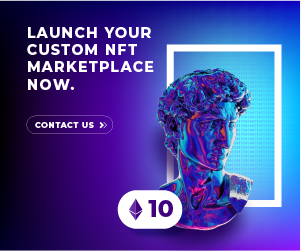Blockchain’s decentralized ledger technology offers several benefits that are transforming the art industry. Here are some of the key ways blockchain is making an impact:
Blockchain in Art World
Provenance and Authenticity
One of the most significant challenges in the art world is verifying the authenticity of a piece of artwork. Historically, verifying provenance—the documented history of an artwork—has been a cumbersome and sometimes unreliable process. Blockchain technology offers a solution by creating an immutable record of the entire history of a piece of art. Each time a piece is bought, sold, or exhibited, the transaction is recorded on the blockchain, providing a transparent and tamper-proof ledger.
This not only makes it easier to track the ownership history of a piece but also ensures that buyers can be confident that the art they are purchasing is authentic.
Digital Art and NFTs
Blockchain has given rise to the concept of non-fungible tokens (NFTs), which are unique digital assets that represent ownership of digital art, music, videos, and other forms of media. NFTs allow artists to tokenize their digital works, making it easier to sell and distribute their creations directly to buyers.
NFTs have transformed the digital art market, allowing artists to retain more control over their work and receive royalties every time their art is resold. This has created new opportunities for digital artists who previously struggled to monetize their creations effectively. By using blockchain, artists can now ensure that their work is unique, traceable, and securely owned by collectors.
Royalty Management for Artists
Blockchain’s smart contract technology allows for automatic royalty payments to artists whenever their work is resold. Traditionally, artists have had little control over the secondary market, and tracking royalties has been difficult. However, smart contracts can be programmed to automatically distribute payments to artists each time their work changes hands, ensuring that creators continue to benefit from the increasing value of their art.
This feature is especially important in the digital art space, where works can be easily replicated and shared. Blockchain ensures that the original creator is compensated whenever the work is used or sold, providing artists with a sustainable revenue stream.
Fractional Ownership and Investment in Art
Blockchain also enables the concept of fractional ownership, where a piece of art can be tokenized and divided into smaller shares. This allows multiple investors to own a portion of a high-value artwork, democratizing the art investment process. Fractional ownership makes it easier for individuals to invest in valuable art without needing to purchase an entire piece, making the market more accessible to a wider audience.
Tokenizing art assets on the blockchain provides a transparent and secure way to trade and invest in art, ensuring that ownership and transactions are recorded immutably. This innovation opens new doors for investors and allows artists to reach a broader base of buyers.
Decentralized Art Marketplaces
Blockchain-powered platforms are creating decentralized art marketplaces, where artists and collectors can buy and sell works directly without the need for intermediaries like galleries or auction houses. This reduces costs for both artists and buyers, making the art market more efficient and accessible.
These marketplaces also provide greater transparency, as every transaction is recorded on the blockchain. Artists can interact with their audience more directly, while buyers can easily verify the history and authenticity of the artwork they are purchasing.
The Role of Blockchain Development Companies in Arts
As blockchain continues to disrupt the art world, the need for specialized development services grows. A blockchain development company in the USA can help artists, galleries, and collectors implement blockchain solutions tailored to their needs. These companies provide expertise in developing decentralized platforms, smart contracts, and tokenization systems that allow artists to securely sell their work and manage their intellectual property.
By working with a blockchain development company, art businesses can take advantage of the latest innovations in blockchain technology to enhance transparency, ensure authenticity, and create new revenue streams.
Conclusion
Blockchain is reshaping the art industry by providing solutions for long-standing challenges related to ownership, authenticity, and monetization. From the rise of NFTs to decentralized marketplaces and fractional ownership, blockchain technology is empowering artists and collectors in unprecedented ways. For those in the art world looking to explore these opportunities, partnering with a blockchain development company in the USA is crucial for successfully implementing blockchain solutions.



